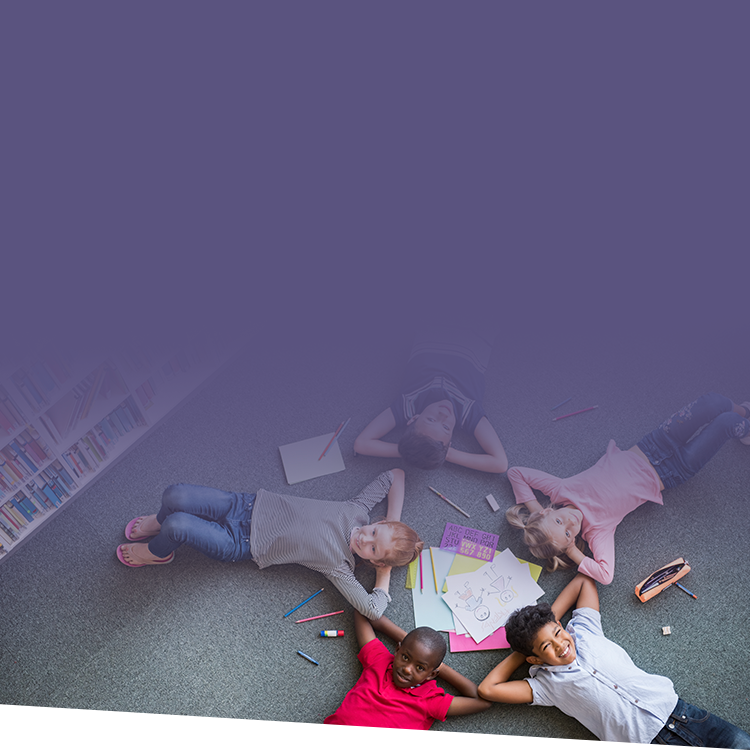Not all schools are able to have a licensed child psychologist or social worker on campus ready to help students in a crisis, guide them through a difficult period, or simply listen. Even if your school does, it’s highly likely your licensed child psychologist or social worker is overwhelmed with the increased number of mental health cases.
Mental health often plays a key role in positive student outcomes. Here’s what you can do to work toward prevention.
Mindfulness 101
The mind-body connection is a popular area of exploration among medical and wellness professionals. Nationally recognized organizations—including the National Institutes of Health and the American Academy of Pediatrics—tout direct correlations between social and emotional factors and physical health. The key for schools is knowing what to do with that information.
The concept of mindfulness dates back nearly 3,000 years. So, what is mindfulness, exactly? At its core, it means pausing and taking a moment to notice what we’re doing instead of simply going through the motions. Mindfulness helps us be better equipped to respond to situations as opposed to reacting to them. In other words, mindfulness helps disable our internal autopilot.
Mindfulness has been shown to reduce stress, increase focus, improve academic or job performance, foster resilience, and lower blood pressure—people who practice regularly even report an increase in feelings of joy and happiness.
Stress Management in Schools
According to the World Health Organization (WHO), one in seven 10–19-year-olds are dealing with a type of mental health challenge—with depression, anxiety, and behavioral disorders leading the way. On campuses across the country, reports of behavioral issues in the classroom are at an all-time high. Stress management programs that improve self-esteem and emotional balance can curb that trend.
School is an ideal setting to introduce mindfulness. Two of the most popular—and most accessible—forms of mindfulness are yoga and meditation. While both practices emphasize a focus on one’s physical space, they employ different techniques to achieve that sense of awareness.
Bodies in Motion
Students spend much of their day in a structured format—seated and paying attention. Providing them with opportunities to move, without the competitiveness of traditional athletics programs, is a great way to improve overall well-being.
Yoga is low-impact, fun, and effective. Not sure if it’s right for your school? Understanding a few basic tenets of the practice may help.
- Benefits: Children who participate in yoga reap social, scholastic, and physical advantages.
- Accessibility: Yoga is for everyone! It is not limited to the most athletic or flexible. Modifications can be made for those with different abilities.
- Movement: Moving with intentionality is the cornerstone of yoga. When children are required to focus on their actions, they are setting the stage for increased mental focus off the mat. Regular practice yields visible improvements in physical strength over time as well, fostering self-confidence.
- Breath: Deep breathing techniques provide stress-reducing coping skills that can be accessed throughout the day.
Consider including administrators, faculty, and staff in yoga sessions with the children. Not only are they modeling for the students, but they’ll also see the benefits of regular practice in their own lives—at work and home. Plus, students will love practicing alongside their favorite teacher.

Tune in to live webinars every week during the school year to get specific, research-backed insight you can immediately apply at your school.
Busy Minds Deserve a Break
All bodies benefit from some form of exercise, whether it’s running around a track, swimming laps, or settling into a yoga pose! But it’s not only our muscles that crave a good workout: our brains do, too.
Although it may sound contradictory, meditation is the ultimate brain exercise. It doesn’t require special equipment and can be done anywhere and at any time. The practice of getting quiet—even for a few minutes—paves the way for a less distracted or impulsive mind.
There are multiple ways to introduce meditation in schools. Teachers might start class by asking students to spend a few minutes with their eyes closed, listening to nature sounds. Other students might follow formal guided meditation while seated on cushions or exercise balls during their physical education class. The practice might even change week to week.
The specific form of meditation is of little consequence; rather, it is the act of bringing the practice into schools—and following through with consistency—that matters. Students will develop lifelong skills, including the ability to deal with difficult situations or emotions. Increases in positivity, creativity, and a reduction of social anxieties are prevalent among children who meditate regularly.
The practice itself provides a built-in lesson in resilience. One of the biggest misconceptions about meditation is that if your mind isn’t clear, you’re doing it wrong. That could not be further from the truth! Children and adults alike have wandering minds—it’s part of human nature. The solution? Make it part of the practice: when you lose focus, simply begin again.
Ready, Set … Where to Start?
The thought of creating a schoolwide mindfulness program may feel intimidating. Take out some of the guesswork with the following tips:
- Faculty and Staff Engagement: Getting folks on board is a crucial first step. Hold an in-service for administrators, faculty, and staff regarding the positive effects yoga and meditation will have on the entire school community. Encourage their participation in the practices to create a positive and welcoming atmosphere for students.
- Training: While hiring outside vendors is always an option, several organizations offer a “train-the-trainer” method—training members of a school’s faculty and staff to lead practices. Find out what your local community offers.
- Longevity: Mindfulness is not a fad; once introduced, incorporate it into the school culture. Working with experts and academic administrators, develop programming that can be followed or replicated for years to come.
- Resources: Websites and apps geared specifically toward children and schools include MindUP, Center for Mindfulness, University of Massachusetts Medical School, and Mindfulness for Children.
As an industry, mindfulness is a relatively new construct. Seek out reliable sources of information when approaching a new program at your school. Unlocking the secret to enlightenment sounds nice, but a renewed focus on overall wellness throughout campus—and a few moments devoid of chaos—might be even better.





